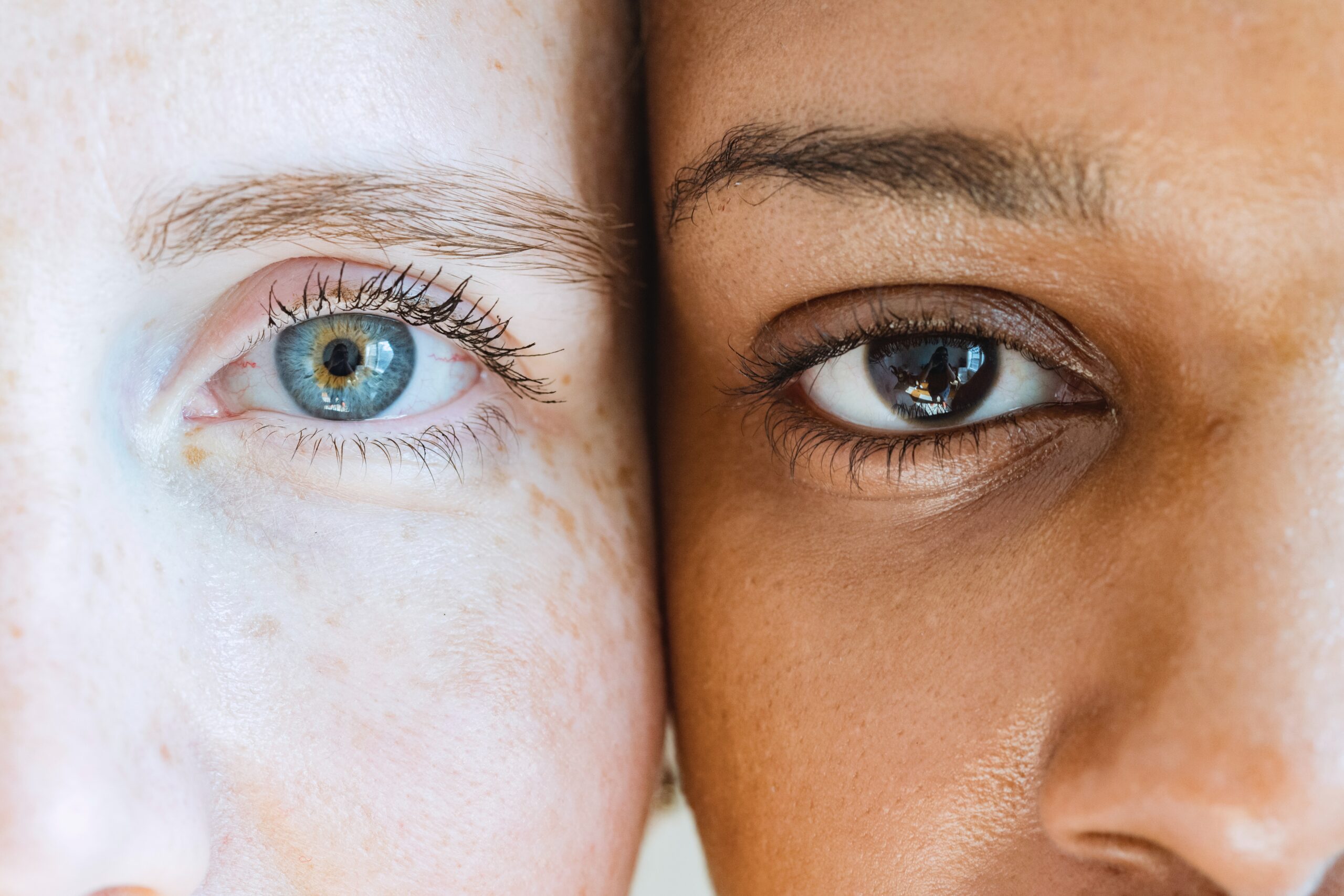
“Okay Google…search ‘eyebrow henna.'”
A robotic voice replies, “Here are the results from the search.”
My thumb swipes upwards in a circular motion as I scroll through hundreds of results and several services offering “henna” for eyebrows. The biggest disappointment is that none of the results show pure henna. This poses a problem because what is being advertised to the world are adulterated cosmetics. What makes eyebrow and lash tint adulterated are ingredients such as paraphenylenediamine (PPD) and other coal tar derivatives. Furthermore, the FDA has not approved any products that color or tint the eyebrows and/or eyelashes “permanently”.
To learn more about what adulterated cosmetics are, visit:
https://www.fda.gov/cosmetics/cosmetics-laws-regulations/key-legal-concepts-cosmetics-industry-interstate-commerce-adulterated-and-misbranded#Adulterated
Pure Henna on Eyebrow Hair and the Skin Underneath
Pure henna can stain light eyebrow hair, but it tends to take on a weak orange color that is gone within a few weeks to a month. When pure henna is applied to darker eyebrow hair, there is not a noticeable difference. A lot of the products that are being marketed for eyebrows aren’t meant to be used for the eyebrow hair itself, but are for staining the skin under the hair. With pure henna, the skin will not stain dark because the eyebrow area has thin skin. It should also be noted that henna doesn’t stain thin skin for long. The products that we see marketed to stain the skin under the eyebrows tend to be a darker color in which henna itself is not able to achieve in this particular area. Henna does not dye skin black.
Note: The FDA does not recognize the use of henna on any part of the body except for hair on the head, unless it is for cultural purposes.
To learn more about pure henna and the skin, visit:
http://www.hennapage.com/henna/encyclopedia/skin/
You probably have seen articles about black henna and PPD. You may have seen photos of people on vacation with scars after being exposed to a black “henna” tattoo. These reactions that we see to PPD are the same reactions we see to “eyebrow henna” and eyelash tints. Why are companies still allowed to offer products that are incredibly toxic? How are they getting away with overlooking these horrible reactions?
Reactions to Eyebrow and Eyelash Tints
“Okay Google…search ‘eyebrow henna reaction.'”
The images are not for those who are easily squeamish. Photos of people with swollen foreheads, crusty, seeping eyebrows, and pus filled eyes all fill my screen. Reactions are identical to reactions from hair color that contain PPD.
I came across a blog that was discussing allergic reactions to eyebrow and eyelash tints. It suggested a product to use for those who have allergies. I clicked on the link of the product advertised, scrolled down to the ingredients list, and the first thing that was listed was “Paraphenylenediamine.” The last ingredient listed was “henna,” but it does not make sense from a scientific standpoint. Henna has specific instructions to allow it to stain, and even then, it does not have a shelf life once made, unless it is frozen after dye release. I have come across enough products in my career to know that “henna” in an ingredients list does not always mean lawsonia inermis.
The the author could have used their platform to promote real education on allergies to products, but instead they suggested a product that can cause complications because the first ingredient, PPD, causes strong allergic reactions. Unfortunately, the blog was not the only piece of material available to the public that was offering misinformation.

Reporting Reactions
If you have had a reaction to a tint for the eyebrows or eyelashes, visit your doctor immediately. Go to the ER if reactions are severe. Please report any adverse reactions here: https://www.fda.gov/safety/medwatch-fda-safety-information-and-adverse-event-reporting-program. Reporting severe reactions can help others who may have a similar or worse reaction to the same or similar product. Document your situation and help spread awareness of the dangers of PPD in cosmetics.

Salons and Brow Tinting Places
The FDA states that eyebrow and eyelash tinting is not allowed if the products contain coal tar derivatives or are considered “permanent”. Regardless of what the FDA does allow, your state laws may not allow eyebrow or eyelash tinting. State Boards of Cosmetology are required to follow both federal and state regulations. Ohio’s State Board of Cosmetology did not have much comment on this issue except that salons and parlors must follow the FDA regulations, as mentioned above. Shops containing illegal tinting services should be reported to prevent serious injuries. To make a report, visit your local State Board of Cosmetology website. (Your state’s board of cosmetology can be found by a quick Google search.)
Microblading and Cosmetic Tattoos
Microblading and cosmetic tattoos, while are considered cosmetics, do not fall under eyebrow or eyelash tinting. For more information on this, visit: https://www.fda.gov/cosmetics/cosmetic-products/tattoos-permanent-makeup-fact-sheet.

Alternative to Eyebrow Dye and Tints
If you are feeling down about your eyebrows, try a product that contains fibers. Most fibers are all natural, keratin fibers. These tend to fill out the eyebrow making them appear fuller, naturally. There are also many eyebrow pencils, liners, and pens available that might work better for you, too. Another benefit to using makeup to shaping and filling in your eyebrows is you can wash it off right away if there are any mistakes. Stay safe and practice safe beauty techniques!
 Maria • Ancient Sunrise Specialist • Licensed Cosmetologist
Maria • Ancient Sunrise Specialist • Licensed Cosmetologist

